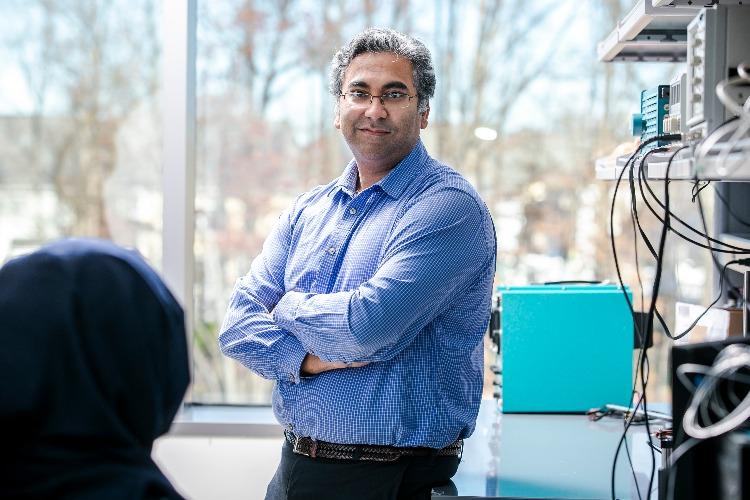
Bioengineering Associate Professor Parag Chitnis is designing active bandages that will be integrated with ultrasound systems for sensing wound state as well as for triggering the release of therapeutic compounds from biocompatible devices implanted in the wound.
Mason Engineering researchers are developing new “active bandages” and implantable devices to improve the healing of serious combat wounds.
There is a critical need for this innovative technology because recovery and rehabilitation after traumatic injury is a major challenge for military personnel.
“The active bandages will be integrated with ultrasound systems for sensing the wound state as well as for triggering the release of therapeutic compounds from biocompatible devices implanted in the wound,” says bioengineering associate professor Parag Chitnis, co-director of the Biomedical Imaging Lab, which is part of the Institute for Biohealth Innovation.
Chitnis was awarded a $1.2 million grant as a member of a consortium of nine academic and industry entities led by Columbia University with a total budget of $16.4 million, funded by the Defense Advanced Research Projects Agency (DARPA). The research is called “TRAUMAS: Treatment and Recovery Augmented with Electrical and Ultrasound-Mediated Actuation and Sensing."
“It’s a massive collaborative effort towards a common goal,” says Chitnis, who researches diagnostic and therapeutic applications of ultrasound. “We’ll be collaborating with experts in the field of biomaterials, tissue engineering, and artificial intelligence (AI) to address this need.”
Conventionally, wounds are treated with medications and dressing, which can result in significantly slower or incomplete healing outcomes, but the bioelectronic interfaces developed in this project combined with AI will be able to sense and track the progress of wound healing and actively regulate tissue repair to tailor the treatment for each person, he says.
“We are tasked to reduce the healing time of difficult-to-treat wounds by a factor of two. The hope is that this will lead to better healing, faster rehabilitation, and fewer psychological consequences from a long recovery,” Chitnis says.
The beauty of using ultrasound to assess wounds is that it is non-invasive, safe, cost-effective, and portable, he says.
Mike Buschmann, chair of the Department of Bioengineering, says, “Dr. Chitnis’ work in this DARPA project is at the leading edge of wound care, integrating photonic-sensing technologies with therapeutics delivery. The results are likely to have widespread applications in health care.”
Hopefully, there will be several future adaptations of this research, Chitnis says. “In theory, it could be applied to many other wounds that are difficult to treat such as diabetic foot ulcers. The methods could someday also be used for treating tumors that are difficult to surgically remove, such as in the brain.”
